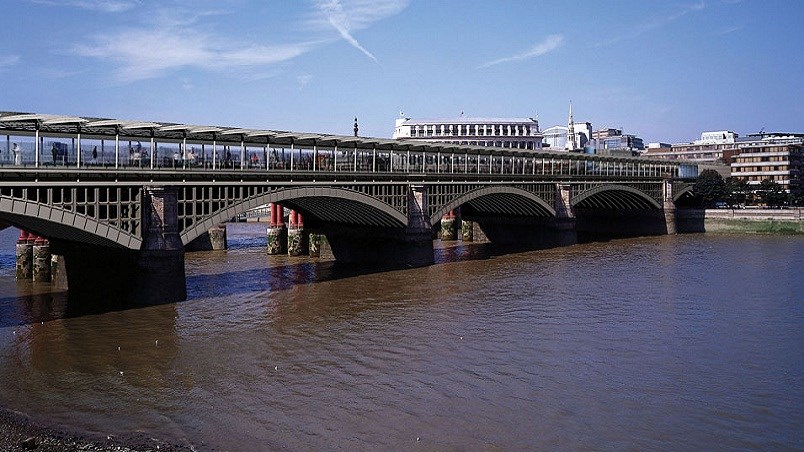We helped to relieve one of the UK’s busiest rail routes, creating a vital link through central London.
We modernised Blackfriars Railway Bridge and its outdated station, bringing this popular route into the 21st Century.
The Thameslink line runs through London from Bedford to Brighton. Linking two airports, two major London rail termini and nine London Underground stations, it's one of the UK's busiest rail routes. The line is vital for keeping London on the move.
Originally built in 1886, the railway bridge required extensive works to ensure it was able to keep up with passenger demand.

We widened and strengthened the structure, building a new station across it with realigned tracks and new covered platforms spanning the River Thames. A new southern entrance gives passengers access from the south of the river for the first time.
We delivered a range of civil engineering, demolition and strengthening works on the bridge itself plus the initial piling and ground engineering work for the new station building. Our in-house piling business, Balfour Beatty Ground Engineering,installed over 700 bored piles (up to 40m deep) and micro piles, including a king-post retaining wall, close to live underground trains. Our crane hire business BPH Equipment supplied crawler cranes for the bridge deck works.
The new station has 250 metre platforms which can receive longer 12-carriage trains (8-carriage previously) and up to 24 of them per hour.
The station remained open throughout the programme to minimise disruption for passengers. We did much of the work at night and over weekends and holidays, while causing as little disturbance to neighbours as possible. 300,000 people passed through the live construction site by road, rail, underground and river every day.
Our Balfour Beatty Kilpatrick business were responsible for fitting over 4,400 solar panels (covering 6,000 square metres) to the roof of Blackfriars station, creating both the biggest solar bridge in the world and the largest solar array in London.
The project followed on from the success of our £115 million project to build the new underground northern ticket hall at King's Cross St Pancras. London Mayor Boris Johnson described our work there as "the standard by which all new station developments should be judged."
of extra bridge width
workers on site at peak
kWh pa solar power generated by the roof
tonnes of material transported by barge